Abstract
OBJECTIVE. This study examines how "strategic partnerships" between community-based consortia of oncologists and hospitals (CCOPs) and clinical cooperative groups emerge, develop, and influence patient accruals (i.e., the number of patients enrolled in clinical trials) over time. DATA SOURCES AND STUDY SETTING. Study analyses are based on 65 pairwise relationships that 38 CCOPs established with eight clinical cooperative groups in September 1983 and maintained through February 1989. Data are drawn from grantee applications and progress reports. STUDY DESIGN. The study examines how different types of CCOP-cooperative group exchange relate to one another and to CCOP patient accruals over six time points. Key independent variables include resource dependence, information exchange (i.e., meeting attendance and committee membership), and protocol exchange (i.e., the number of different protocols used). DATA COLLECTION METHODS. Data extracted from secondary sources were entered in a data base. PRINCIPAL FINDINGS. The number of CCOP physicians and support staff who attend cooperative group meetings during the first two years of a clinical research partnership has a significant influence on meeting attendance and protocol use in later years. Two-thirds or more of the variance in patient accruals at each time point can be explained by the number of different protocols used and the number of CCOP representatives serving on cooperative group committees (or attending cooperative group meetings). CONCLUSIONS. The findings highlight the importance of historical relationships and anticipated resource dependence in shaping initial exchange patterns. They also suggest that strategic partnerships need to emphasize structures and processes that encourage early involvement in collaborative activities and that reward participants for maintaining high levels of interaction.
Full text
PDF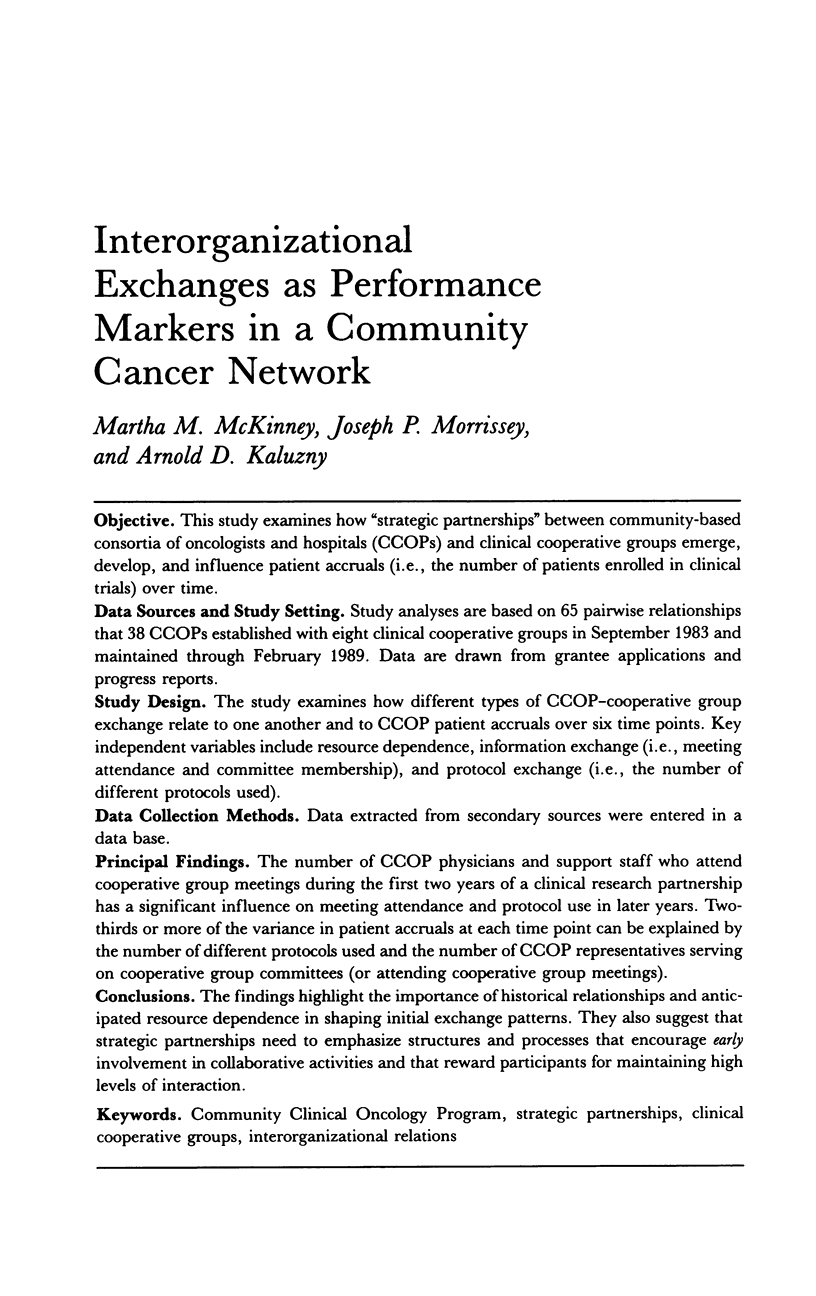
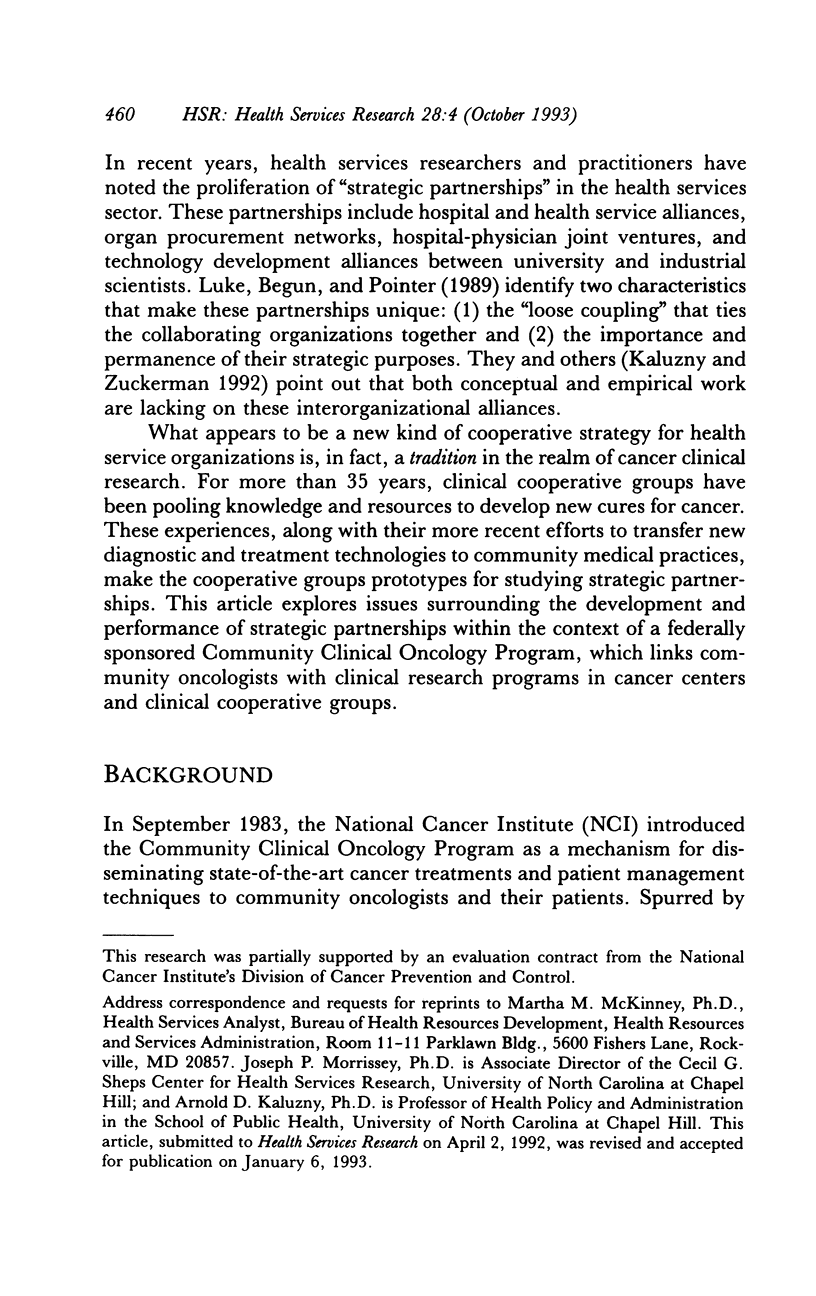
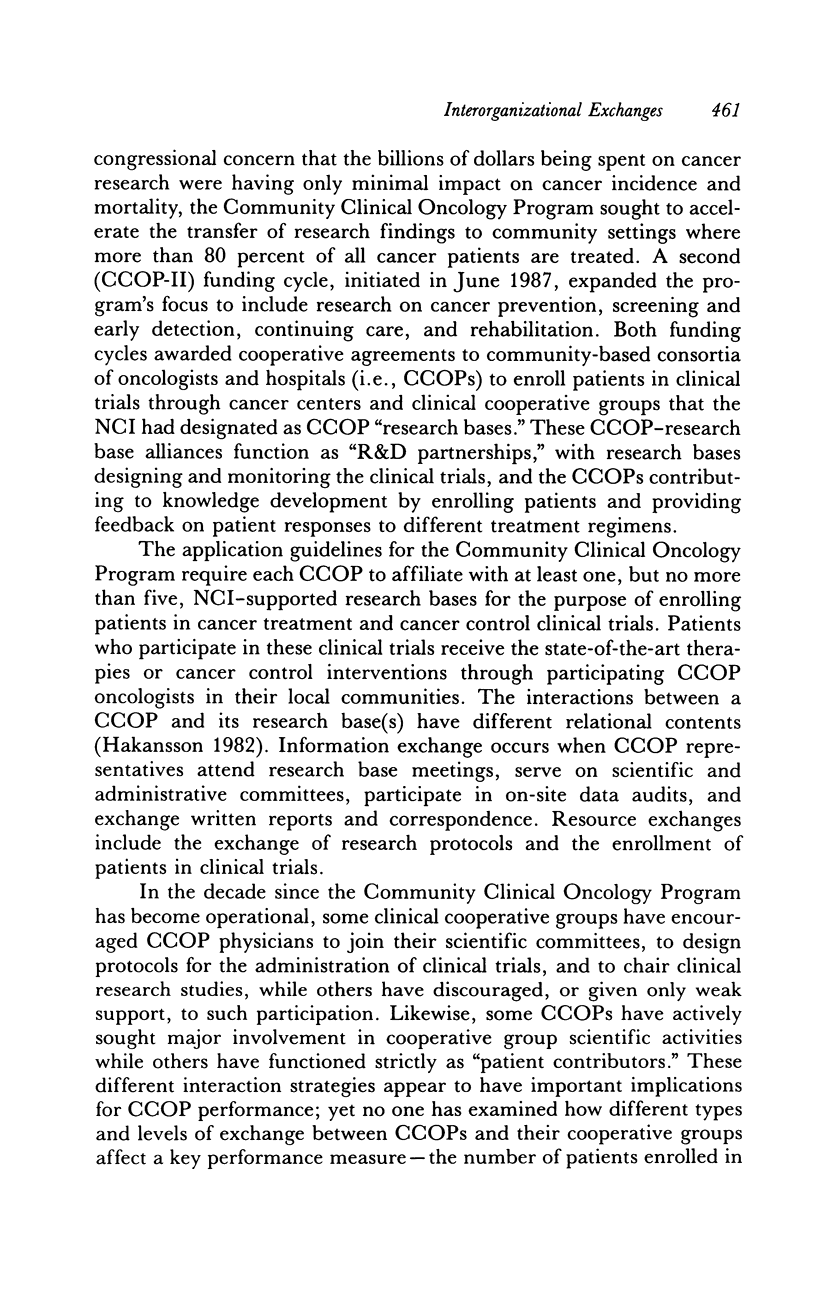
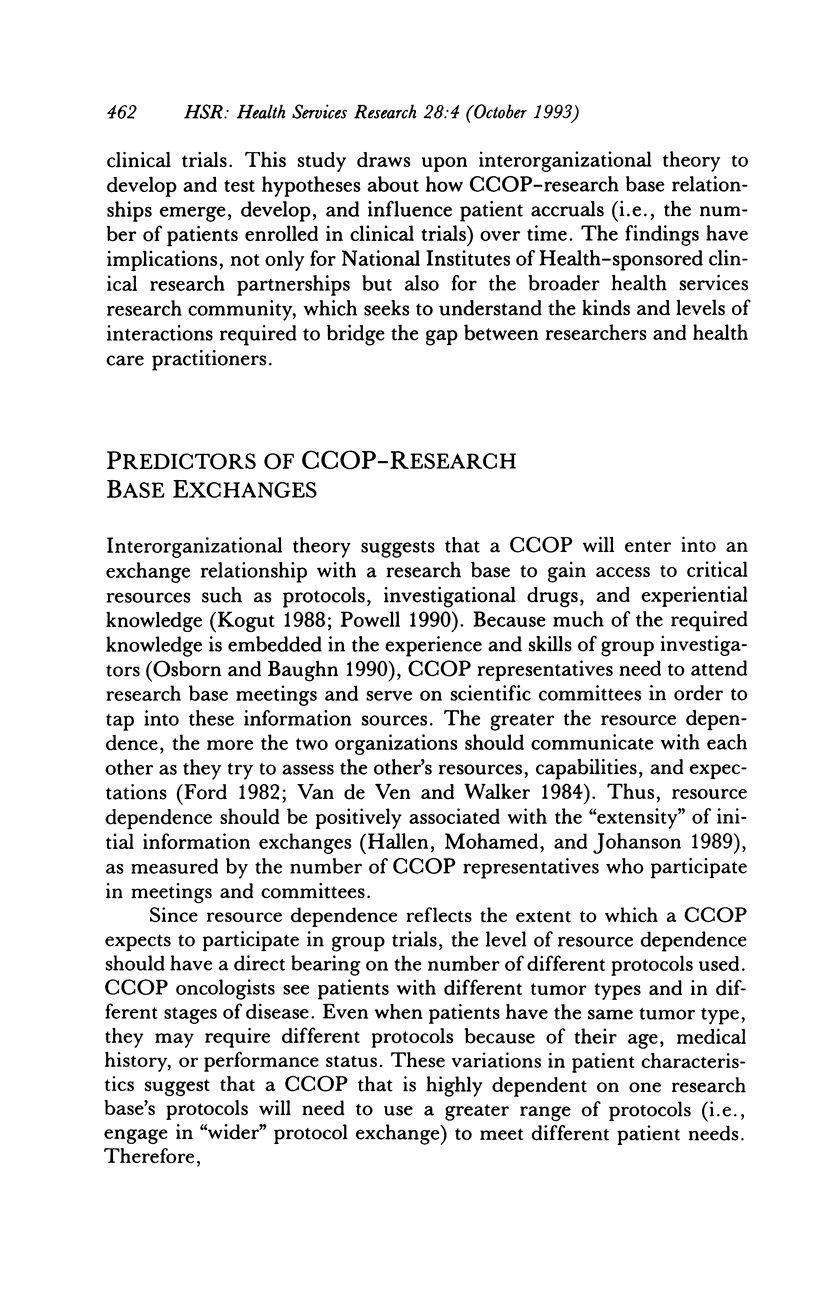
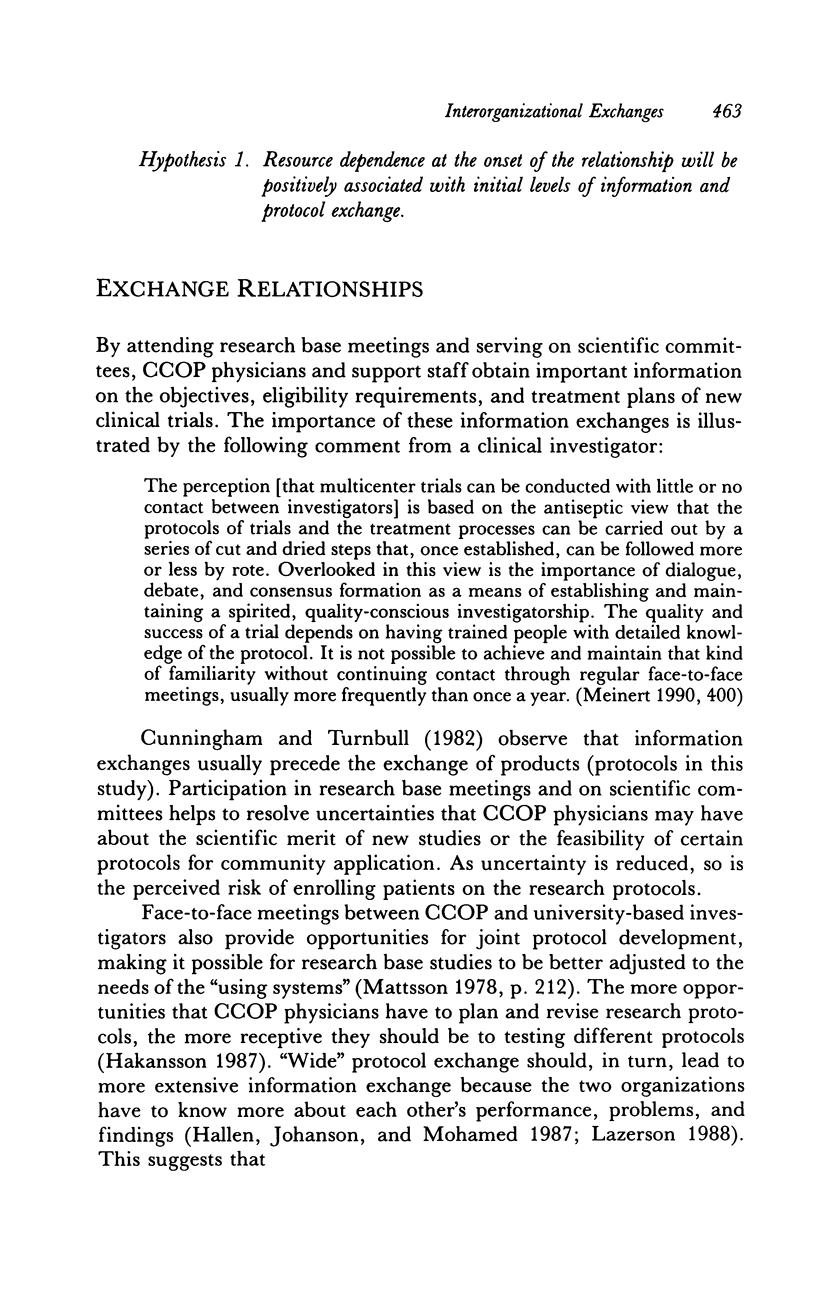
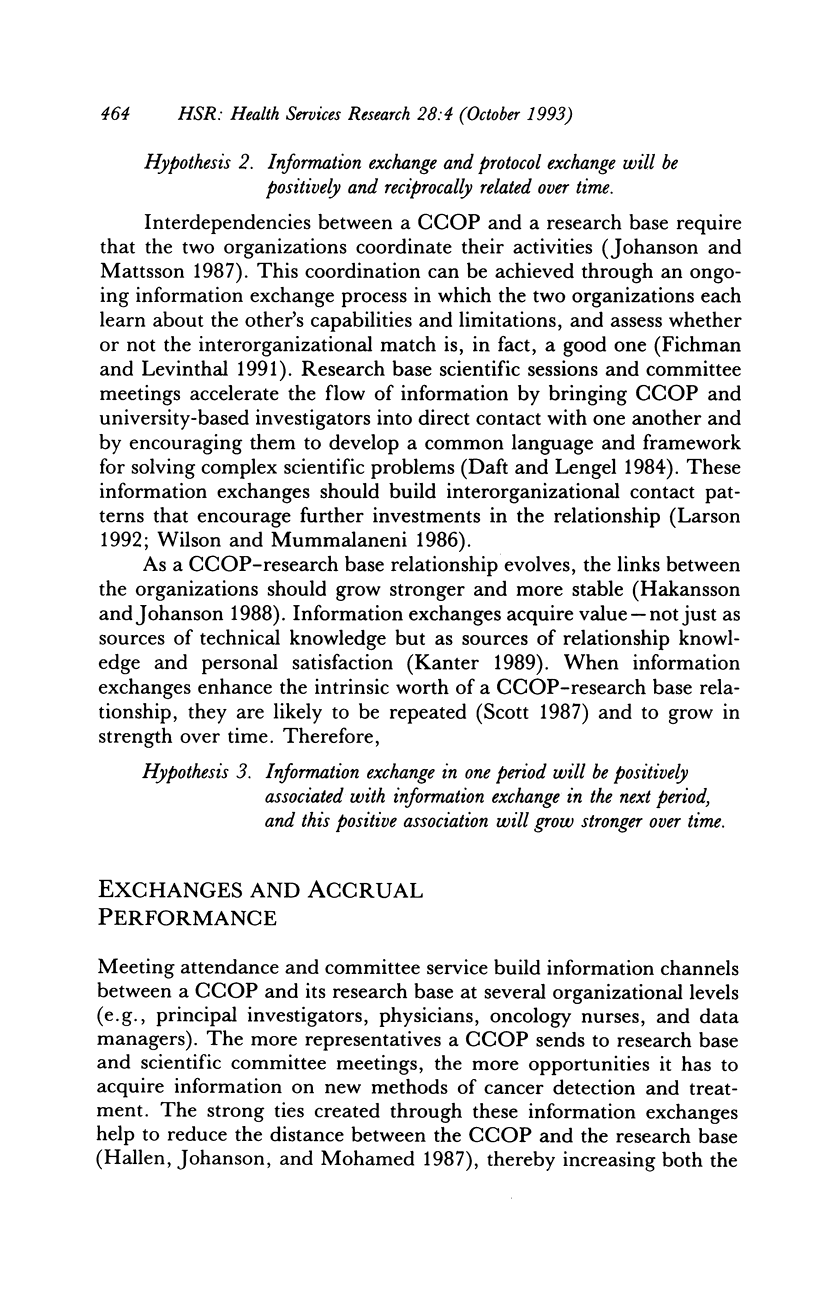
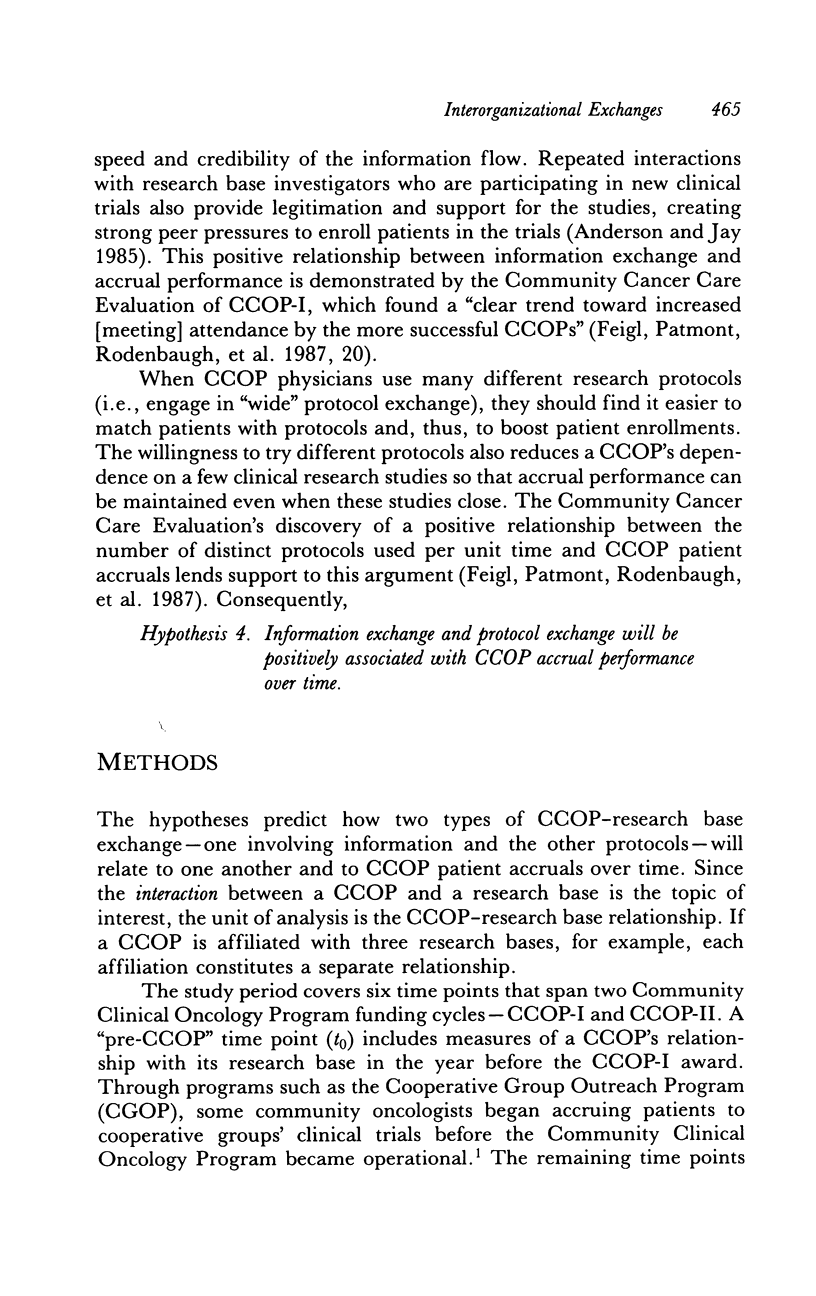
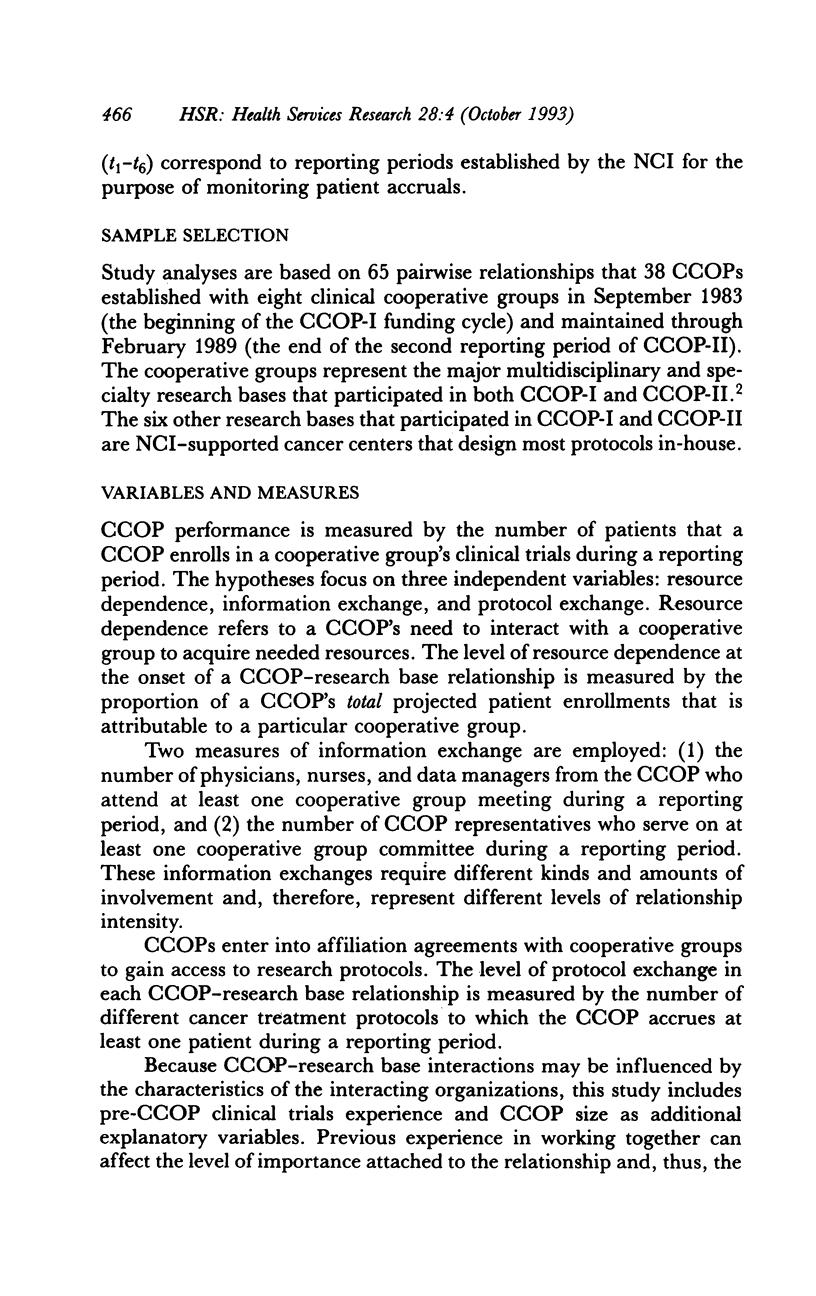
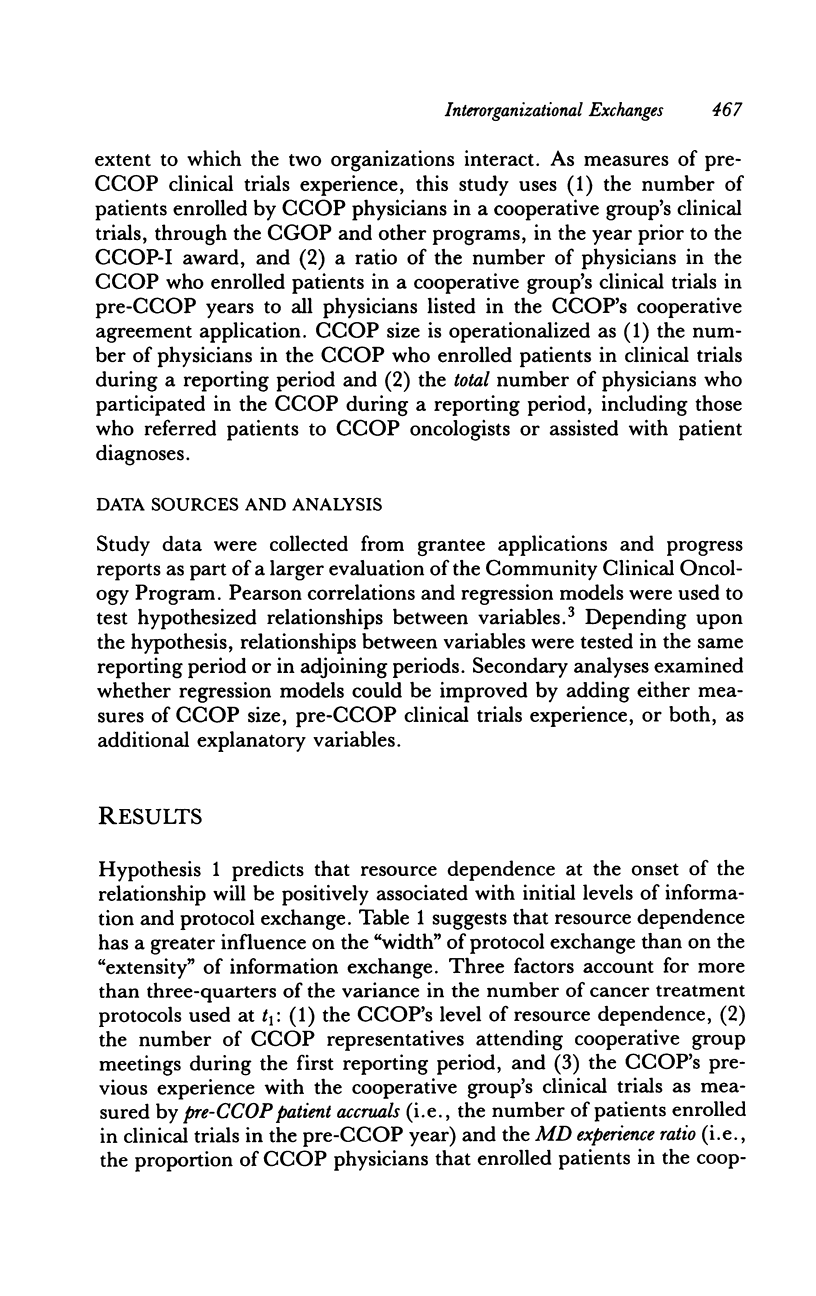
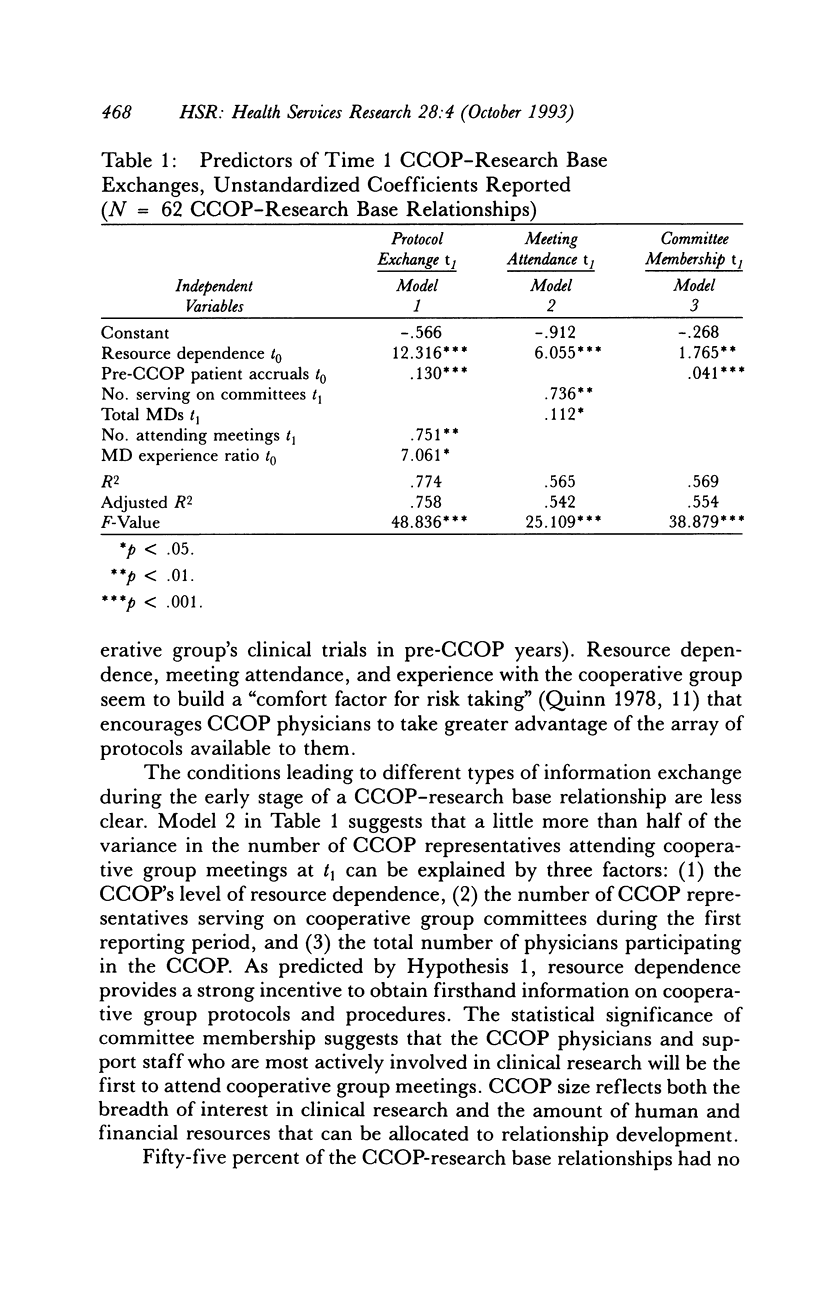
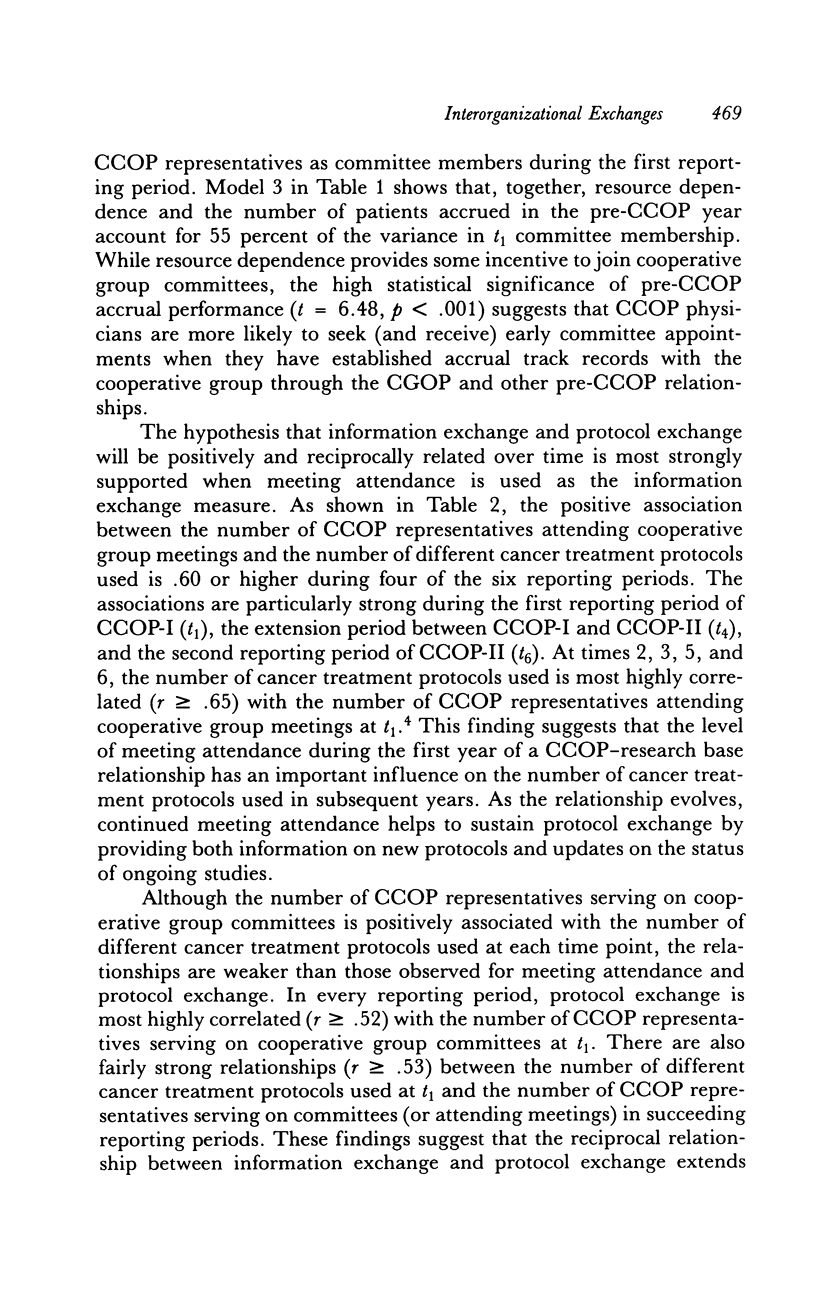
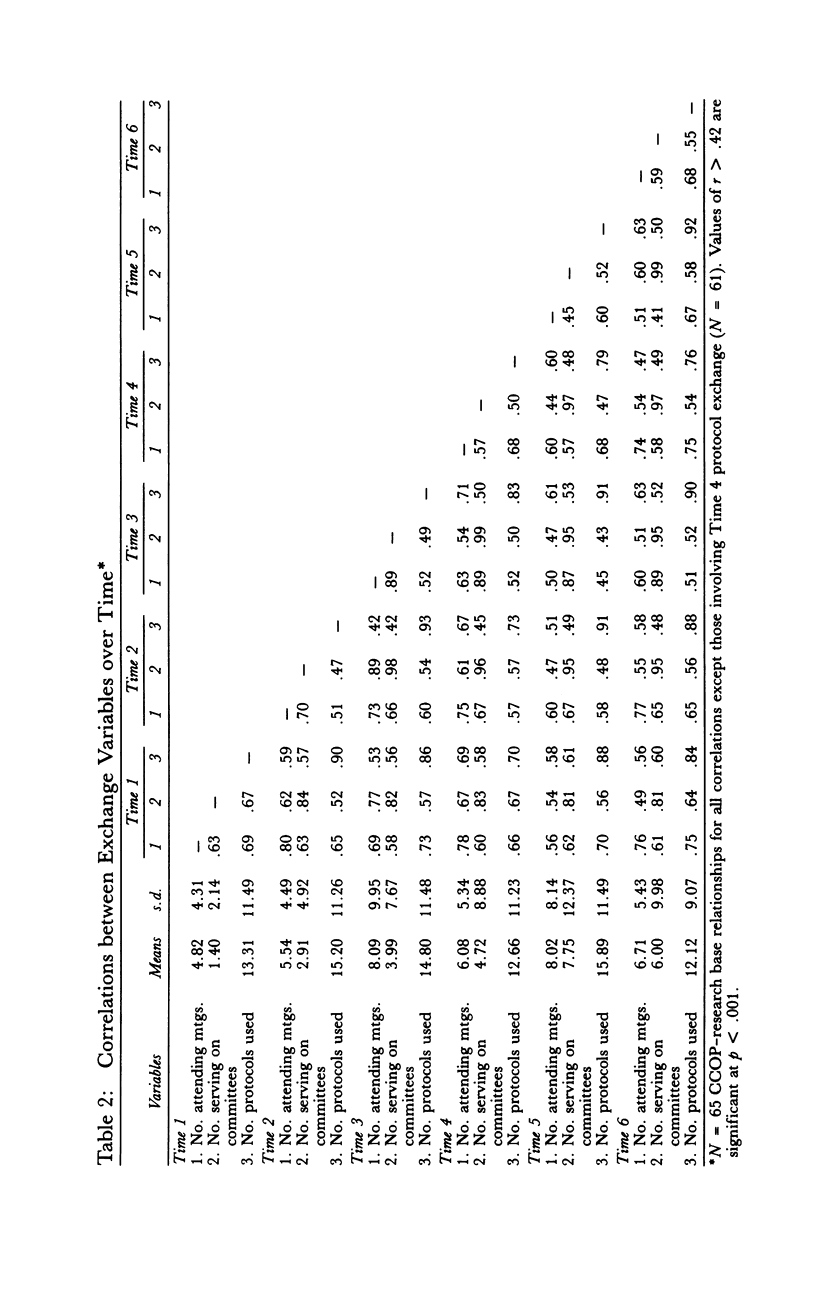
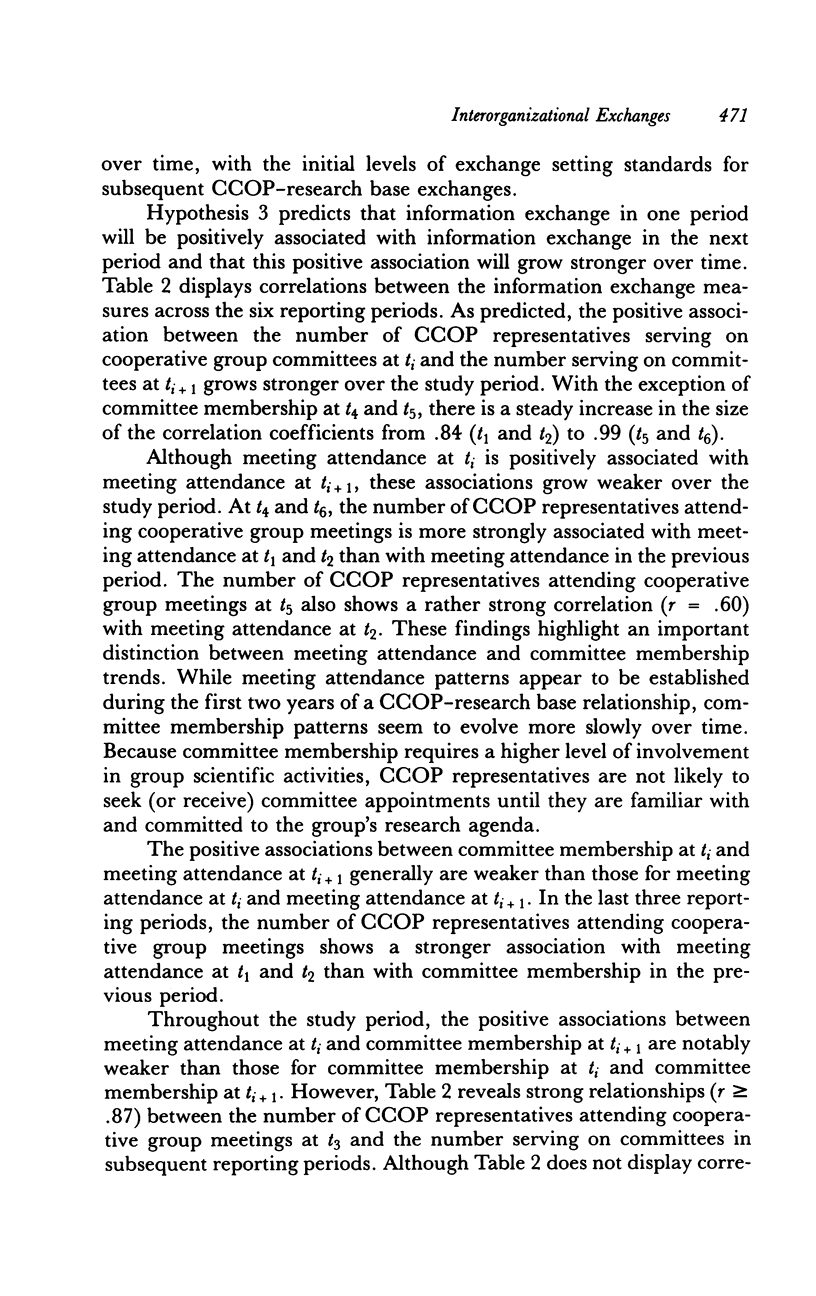
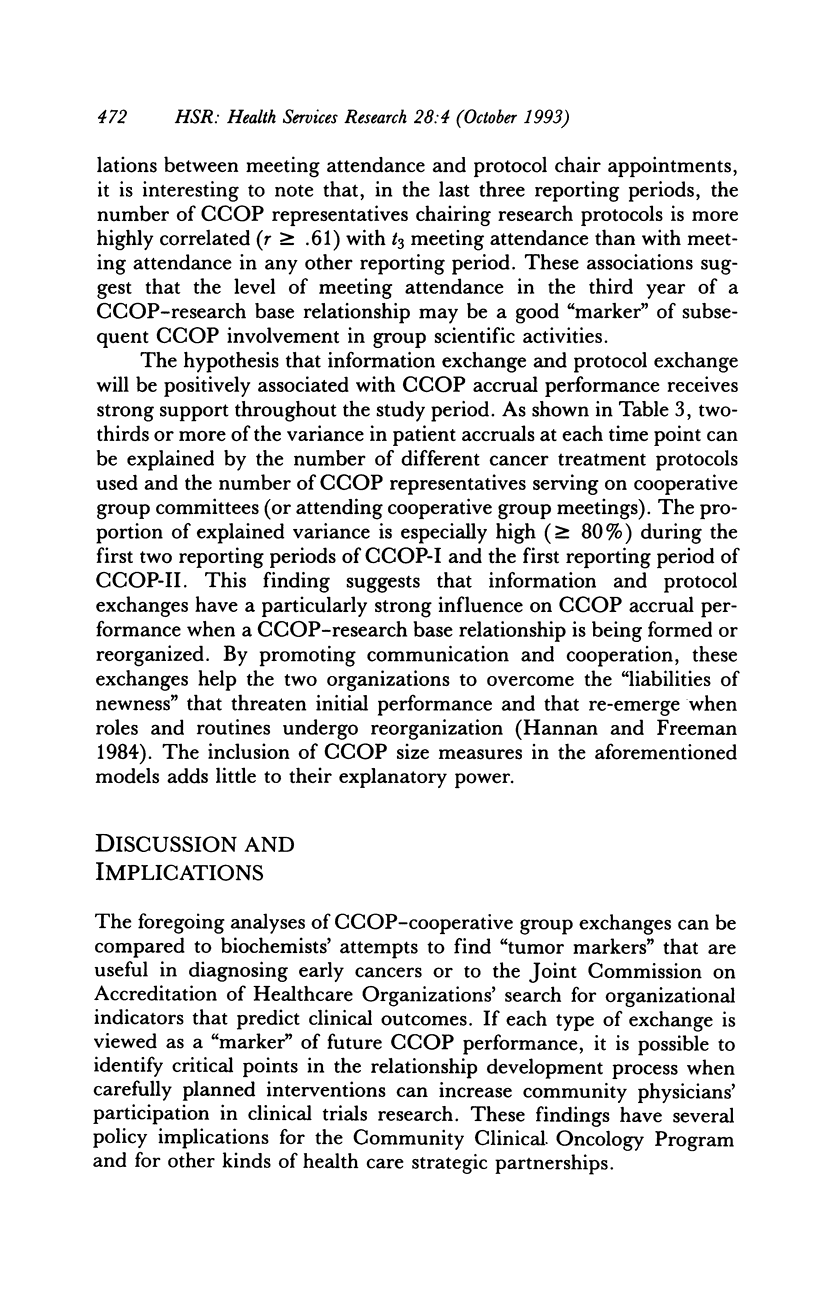
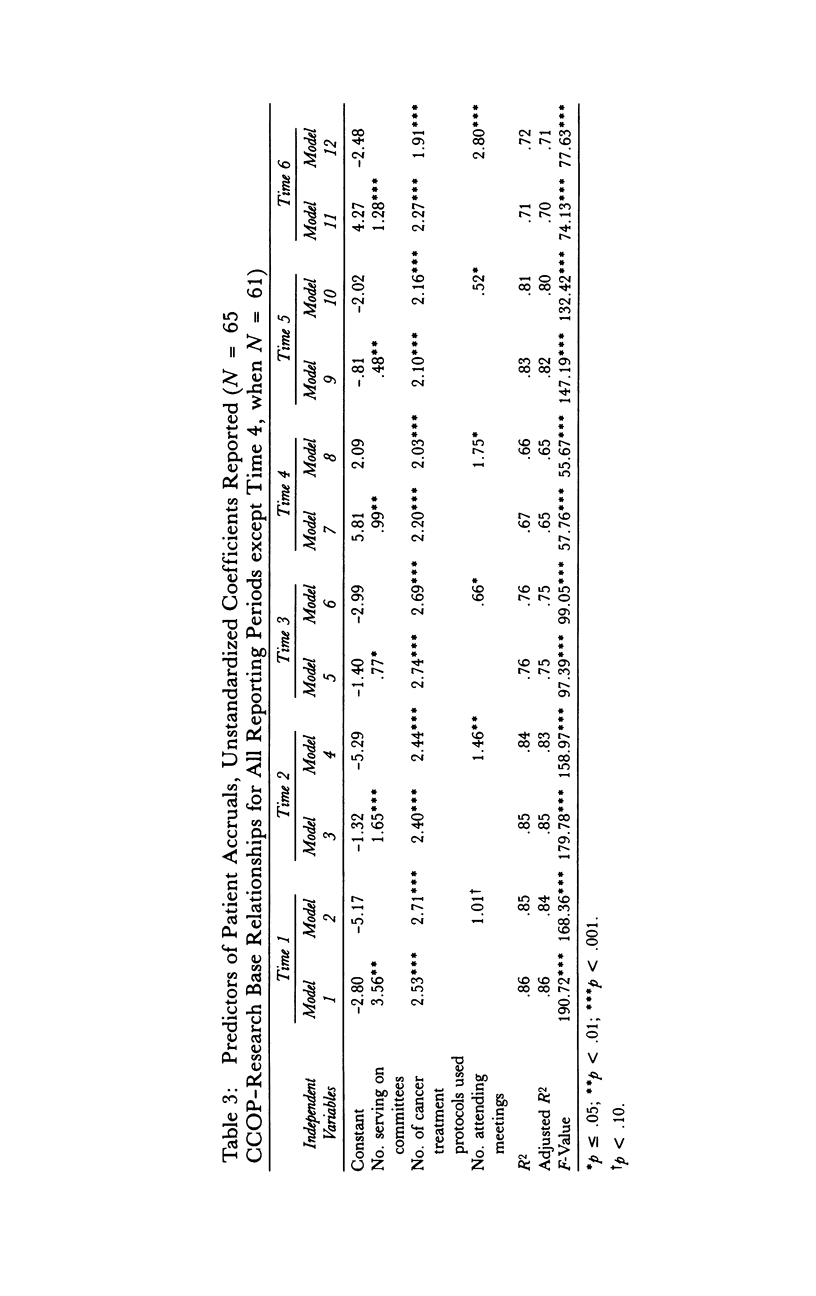
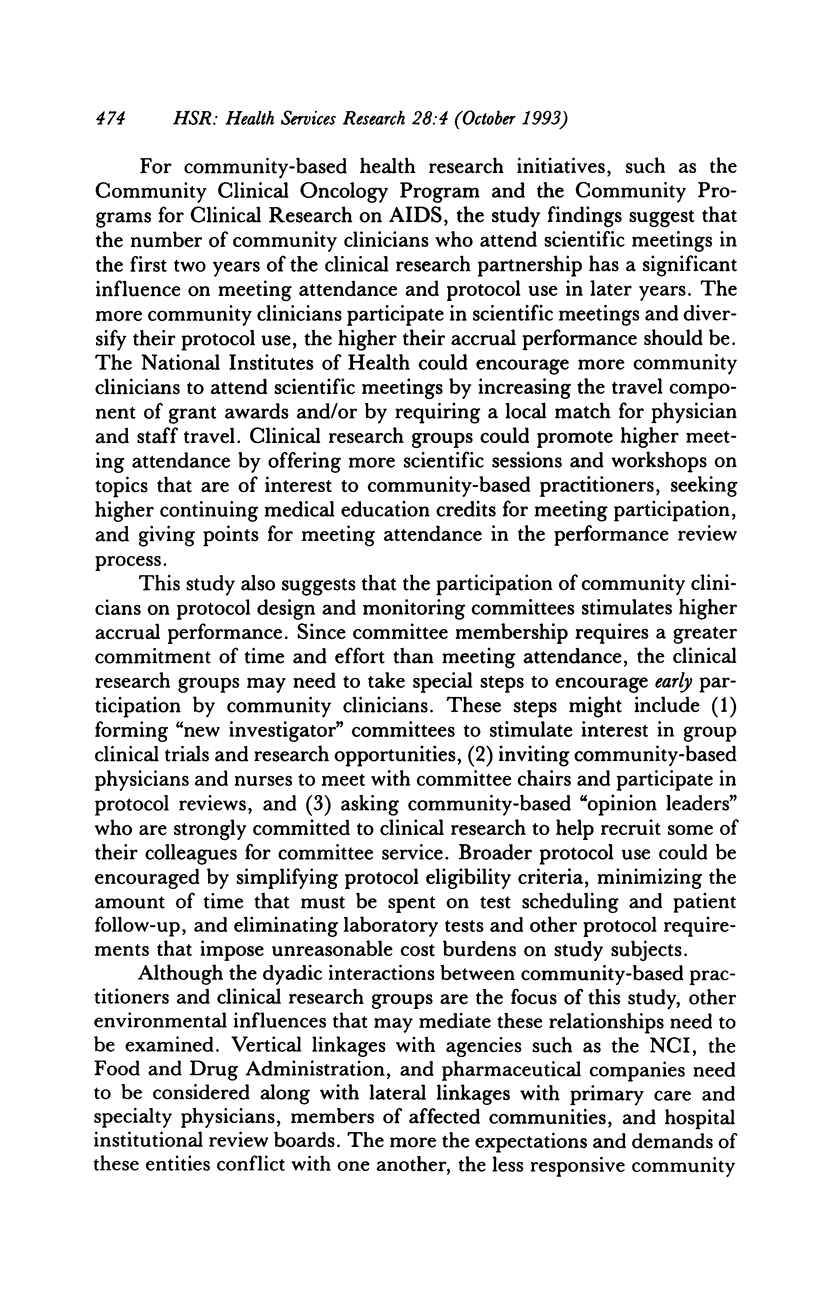
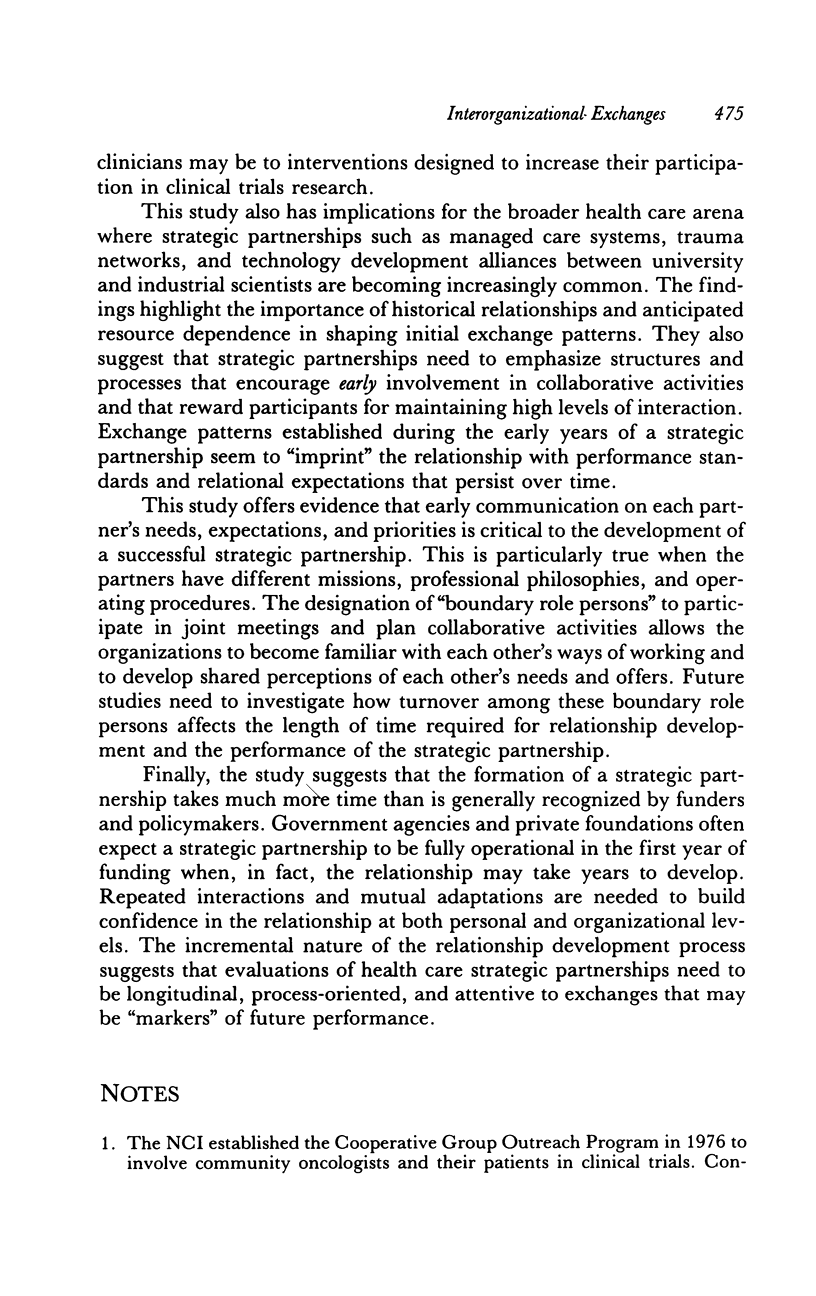
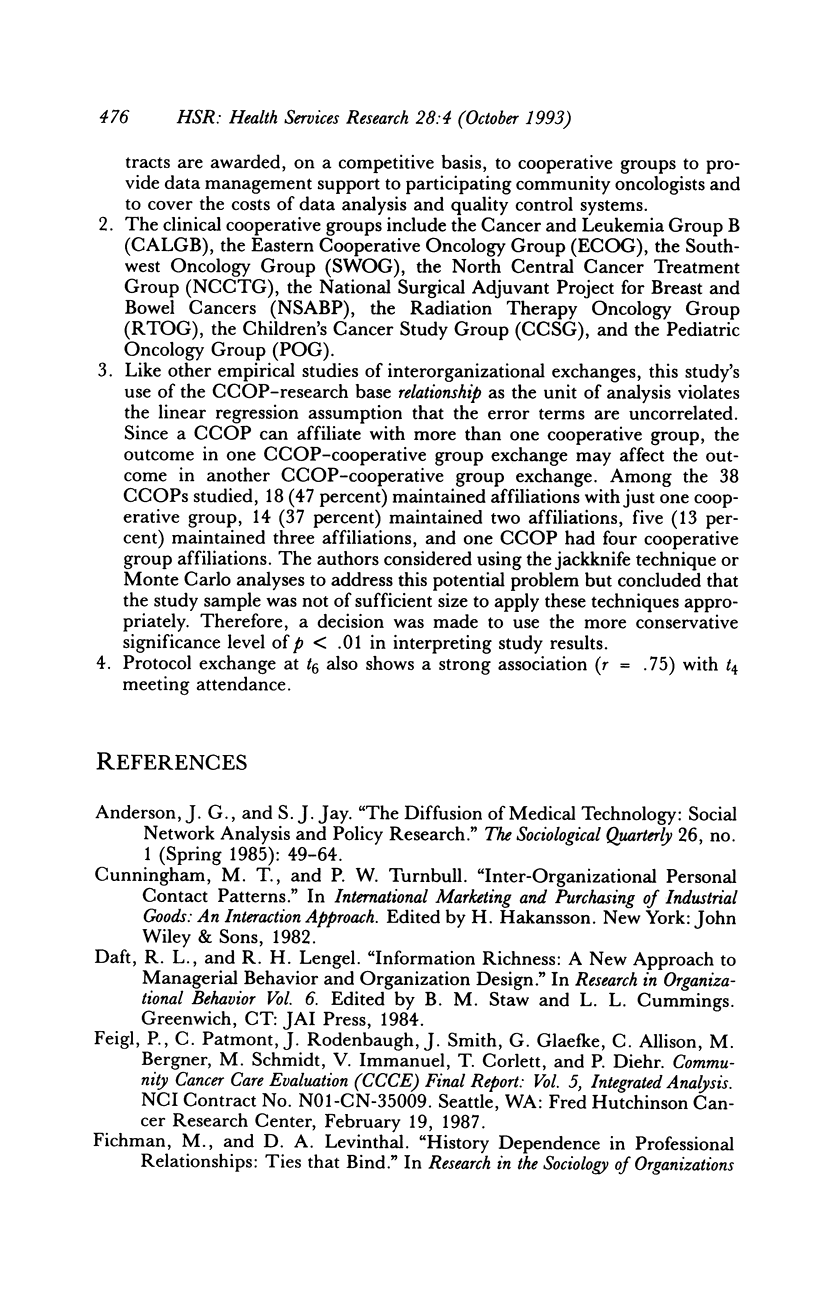
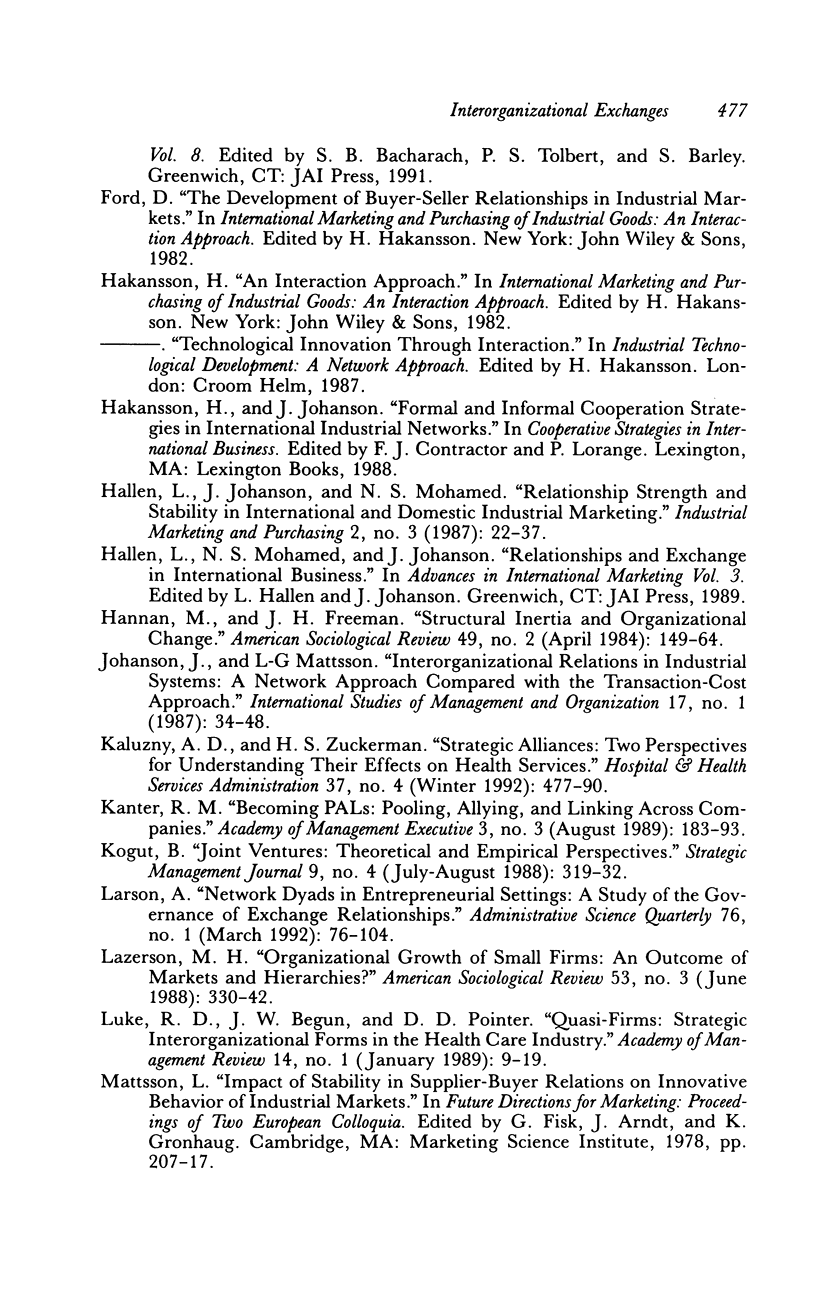
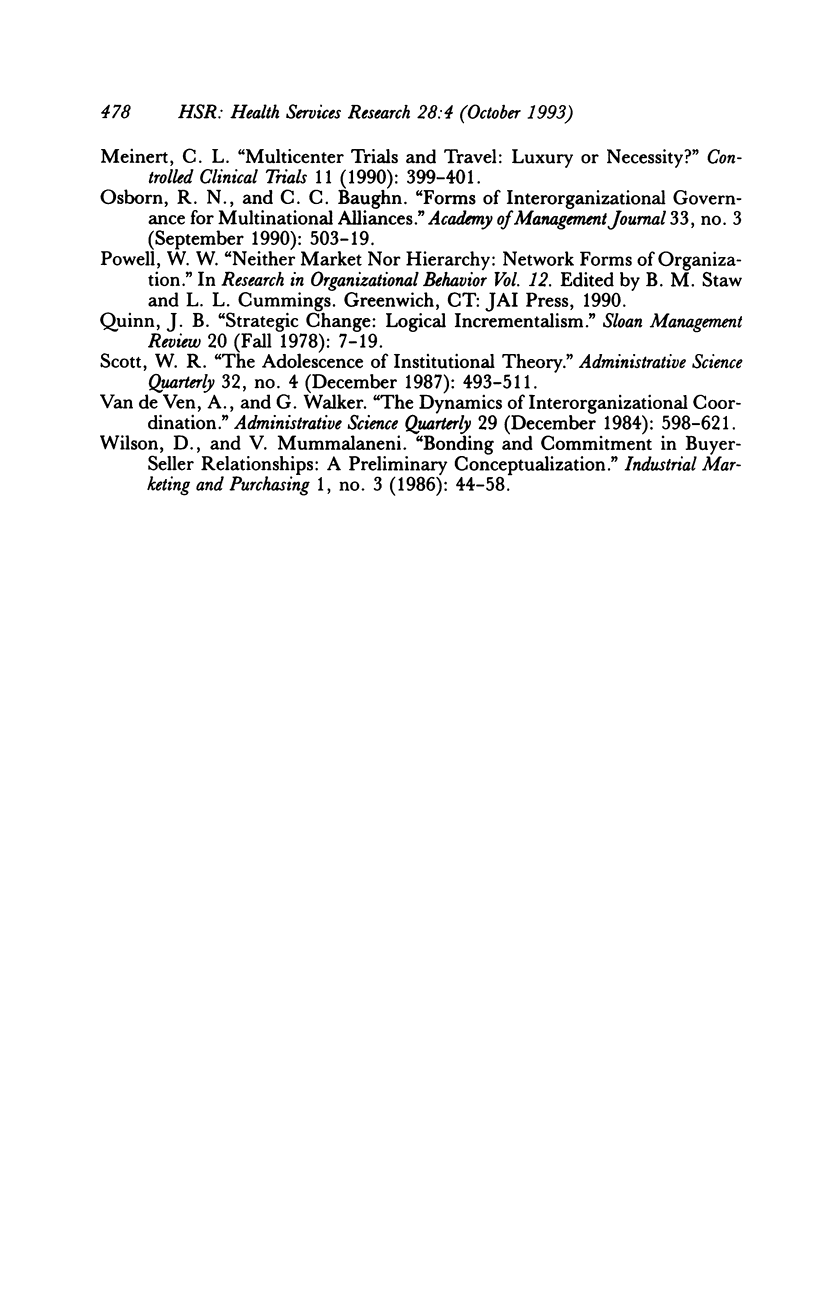
Selected References
These references are in PubMed. This may not be the complete list of references from this article.
- Kaluzny A. D., Zuckerman H. S. Strategic alliances: two perspectives for understanding their effects on health services. Hosp Health Serv Adm. 1992 Winter;37(4):477–490. [PubMed] [Google Scholar]
- Luke R. D., Begun J. W., Pointer D. D. Quasi firms: strategic interorganizational forms in the health care industry. Acad Manage Rev. 1989 Jan;14(1):9–19. [PubMed] [Google Scholar]
- Meinert C. L. Multicenter trials and travel: luxury or necessity? Control Clin Trials. 1990 Dec;11(6):399–401. doi: 10.1016/0197-2456(90)90016-u. [DOI] [PubMed] [Google Scholar]
- Van de Ven A. H., Walker G. The dynamics of interorganizational coordination. Adm Sci Q. 1984 Dec;29(4):598–621. [PubMed] [Google Scholar]


